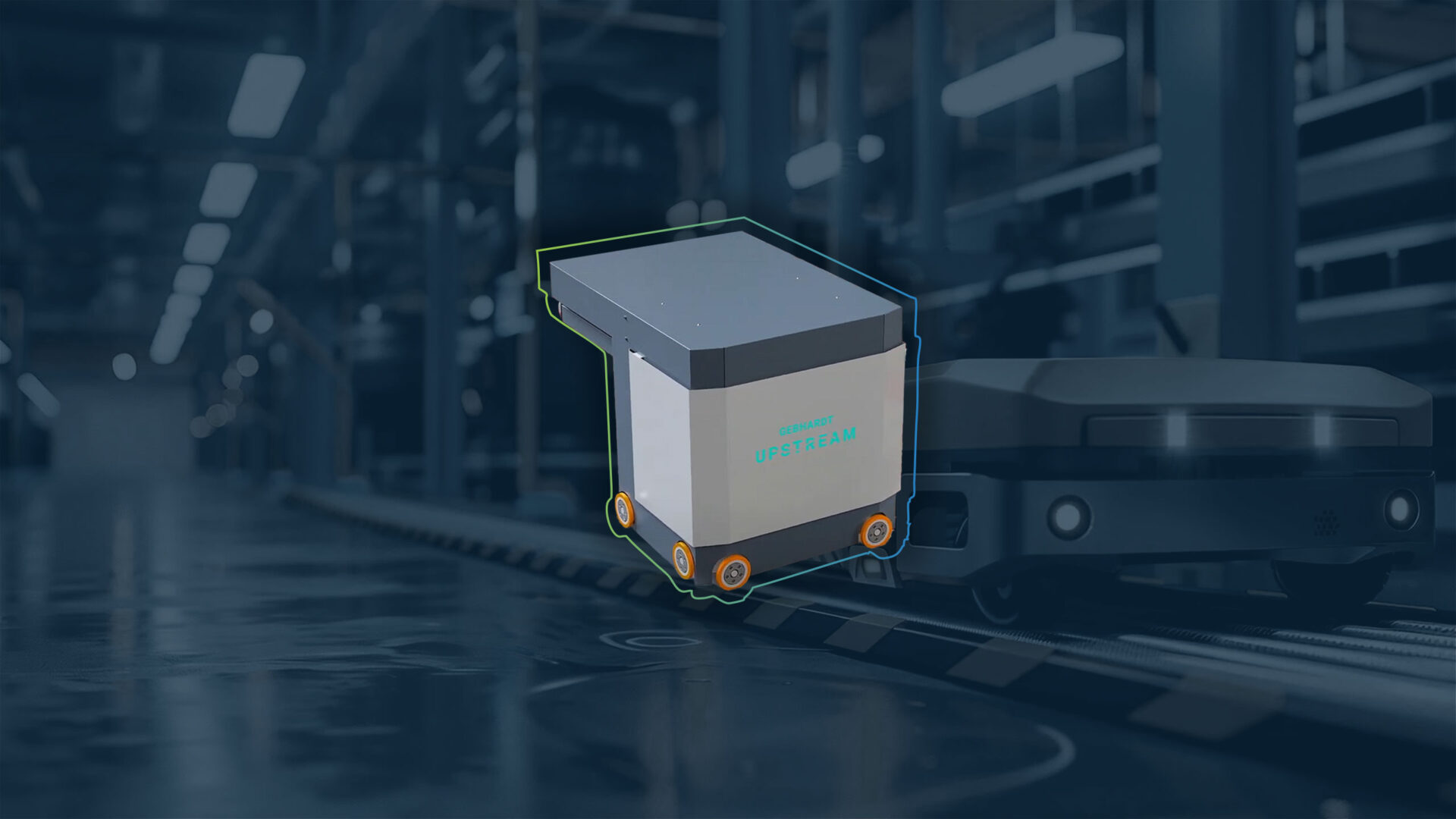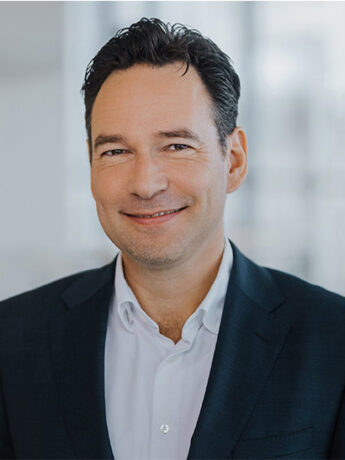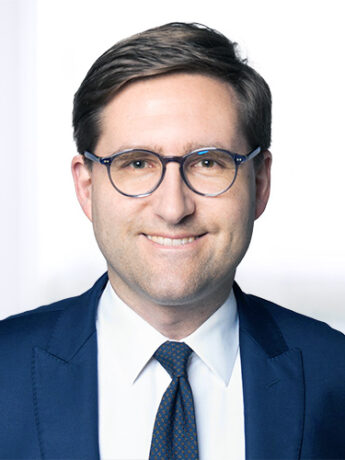
Automated storage systems: Upstream® from Gebhardt
The Upstream® system from GEBHARDT is a flexible shuttle storage solution for efficient and sustainable…

INTERVIEW SERIES GLOBAL OPERATIONS FOOTPRINT
The “Global Operations Footprint” interview series sheds light on the many facets of global production networks – from location strategies and supply chain architectures to resilience, digitalization and leadership issues. The focus is on the experiences and perspectives of high-profile managers from industry and science, who provide insights into their strategic considerations and practical decision-making processes.
With this series of interviews, we aim to make one topic tangible through personal experiences, assessments and tried-and-tested approaches. Our interviewees show how companies organize their global value creation structures, what principles guide them – and how global networks are evolving under the pressure of technological, geopolitical and market changes.
In conversation with Christian Köstler, the focus is on the USA: its strategic role in the global production footprint, location selection and supply chain design as well as the establishment and operation of production plants in the USA.

Chief Operating Officer (COO) of DEHN SE, Neumarkt i.d. Upper Palatinate
Christian Köstler studied mechanical engineering in Munich, earned an MBA in the USA and held management positions at STIHL AG in the USA from 2000 to 2015; he also served on the board of a US business development organization for several years. Since 2016, he has headed the global operations teams at DEHN SE as COO. Under his leadership, DEHN SE is expanding its global operations footprint with production plants in Germany, Romania and the USA.
The USA has always been a key market – but its strategic relevance has increased further in recent years. Not only because of its size, but also because it is a homogeneous market with a common language, currency and high purchasing power. If you want to have a serious presence there, you have to localize – ideally with your own production. This is not only rewarded by the market, but also actively promoted by politicians. If I had to describe the USA in one word, it would be “convenience” – and that is exactly what it offers investing companies.
We entered the market through an acquisition – specifically through a carve-out of parts of ABB’s surge protection business. That was a real catalyst for us. We had difficulties gaining a foothold in the US market with European products. The acquisition not only gives us direct market access, but also allows us to offer our DEHN portfolio, which has since been adapted to the American market and is complementary to our new ABB products, through established sales channels.
Today, our US location is an important building block in the sense of “for the market in the market”. Production creates acceptance, creates trust. It shows our customers in the United States: We mean business.
The USA has always been of central importance because it is a homogeneous market with a uniform language, currency and high purchasing power.
Christian Köstler, Chief Operating Officer of DEHN SE
If you think you are going to get a factory for free in the USA, you will be disappointed. But anyone with serious plans to invest in the long term will find clear structures and fast processes. For us, the CHIPS Act is indirectly relevant, if at all – but that does not mean that the programs have no overall effect. Conversely, if new buildings, factories etc. are built as a result, these are potential customers for our lightning and surge protection products. All in all, however, the regional and local support programs are decisive. It is important for interested companies to know exactly what their own investment profile is – from energy requirements to labor supply. In many regions, there are specialized funding programs that specifically address medium-sized investors.
I see differences in approach rather than strategy. Medium-sized companies generally find it easier to adopt American pragmatism – provided they delegate decision-making authority to local management. This is expected there. Business promoters appreciate it when local managers are free to make decisions.
Large corporations, on the other hand, often operate via different business units that exist side by side. There is then not “the” US footprint, but several – sometimes without any points of contact. SMEs often think in a more integrated way and bundle their activities more strongly.
The decisive factor was a balanced mix of logistical, economic and social factors: Proximity to a seaport, a well-connected highway and rail network, availability of labor and the shortest possible time difference to Germany. We also didn’t want to end up in an anonymous metropolitan region, but in a place where you know the mayor and decision-makers personally. At the same time, it was important to us to invest in a region with stable demographics – in other words, where there is an influx rather than an outflow.
And another US peculiarity played a role: we wanted to move to a so-called “Right to Work State”, which offers an employer-friendly environment and in which union ties are not a prerequisite for employment. In retrospect, this overall approach was absolutely right.
The ability to deliver is a key differentiating feature – often even a decisive factor in purchasing. Expectations are strongly influenced by Amazon & Co: The US customer thinks in terms of delivery time and availability. Those who can deliver reliably and quickly gain a real competitive advantage. In a country of this size, this is only possible with a well thought-out distribution network – not necessarily with several factories, but with regional warehouses and distribution centers.
In short: in the USA, speed, accessibility and responsiveness often count more than price alone. The market attaches great importance to simple processes and reliable availability.
In the USA, there is a multi-layered system of funding opportunities – from the city to the county to the state. The decisive factor is which of the available subsidies suit your own project. Some regions offer cheap land, others pay per job created or promote training projects with specific budgets. In North Carolina, for example, funds from the former tobacco industry are used to attract new industries. In Florida, such a fund is financed with the compensation payments from the BP oil platform disaster.
It is important not to view these programs in isolation. They are rarely the decisive reason for a location decision. For us, the subsidies were a welcome component, but not the main driver.
Economic developers are looking for investment and jobs. Companies that create well-paid blue-collar jobs are particularly valued. German SMEs with a dual training background are very welcome. But the important thing is to go there, take a look at the community colleges and talk to the people in charge. If you come across a functioning network there that takes training, integration and cooperation seriously – then that can be a real success factor. And don’t forget: the dynamism of the region. No future without immigration.
The USA offers good data transparency – from industry directories to tools such as the Bloomberg Terminal. However, the quality and depth of the supply chain varies greatly depending on the industry. What is readily available in the automotive sector – such as metalworking or stamping technology – is often in short supply in niche industries. Many German companies are therefore moving towards greater vertical integration. Strategic purchasing is often not as pronounced in the USA as it is in Europe – but it is more pragmatic. Those who think long-term need either strong partners or their own vertical integration.
The most striking difference lies in the project approach: while in Germany we plan in great detail and often 120% in advance, the approach in the USA is characterized more by pragmatism. 80% is enough – the rest is adjusted during operation, even if the day takes longer than ten hours. This means faster sprints, but also more frequent course corrections. It is crucial to be present on site and to regularly check whether measures have actually been implemented sustainably.
At first glance, the USA appears to be culturally close – but this is often not the case in everyday working life. Management there is more personal and emotional. A rather technocratic style is quickly perceived as cold and unapproachable. Proximity, empathy and even a tale from private life are part of it.
Trade unions play a different role in the USA, as there is no works constitution law like here. The relationship is more confrontational.
Automation is key – but it must be thought of pragmatically. My principle is: first simplify and stabilize processes, then automate them. No special machine excesses, no highly complex one-offs. What may work in Germany often fails in the USA due to a lack of personnel for maintenance and programming. Automation must be robust and intuitive to operate – even by unskilled workers in case of doubt. If this works, you can achieve higher system availability than in highly specialized German environments. Keep it simple – this is not a reduction, but a strategic adaptation to the reality on site.
Quite clearly, it needs to be taken seriously – and with the best people. Anyone who thinks that Europe can do this on the side will fail. The new geopolitical realities make it necessary to bring production closer to the market. Anyone taking this step should do so consistently and professionally.
We must not fall prey to the misconception that similarity also means sameness. The USA is culturally closer to us than many other regions – and yet fundamentally different in many respects. Anyone who believes that speaking English is enough will quickly fail due to implicit expectations.
The most important insight: approach each other, listen, understand. And: don’t look at American processes through German glasses. If you can do that, you can combine the best of both worlds – the planning aspirations of Europe with the pragmatic drive of the USA. In this way, America has become my second home, both personally and professionally.

Senior Manager, Senior Manager, Hamburg, Hamburg
Kai Philipp Bauer studied mechanical engineering with a focus on production technology and has been working in consulting for over 15 years. He advises his clients in particular on issues relating to strategy development, operations management and digital transformation.
You need to load content from reCAPTCHA to submit the form. Please note that doing so will share data with third-party providers.
More InformationYou are currently viewing a placeholder content from Turnstile. To access the actual content, click the button below. Please note that doing so will share data with third-party providers.
More InformationYou are currently viewing a placeholder content from Facebook. To access the actual content, click the button below. Please note that doing so will share data with third-party providers.
More InformationYou are currently viewing a placeholder content from Instagram. To access the actual content, click the button below. Please note that doing so will share data with third-party providers.
More Information